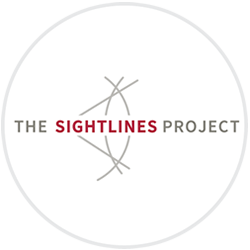1. Why are Baby Boomers in particular down on social connectedness indicators?
This is arguably one of the most intriguing findings that came out of the inaugural Sightlines report. There are many possible explanations, all of which we are currently exploring through reviews of existing studies and development of new studies. One popular thought is that the measure of social connectedness did not reference any type of social media. We are designing a survey and reviewing previous research on how Boomers connect with others and the benefits of in person versus virtual interactions. Another possibility is that Boomers today are the preeminent sandwich generation –they are often caring for parents in very old age and young adult children who have opted to move back home (note: the index primarily taps social interaction outside of the home).
2. What role might technology play (e.g., texting, video chat, etc.) in social connectedness and other Sightlines outcomes?
Given our position here in the Silicon Valley, the Sightlines team is particularly interested in exploring this question in depth. To do so, we are beginning to collaborate with various faculty and industry leaders to determine how best to study the role of technology in enhancing social engagement, financial security, and healthy living. In Spring 2016, the SCL organized a conference on wearable technology to measure healthy living. Currently, we are developing a social media launch conference bringing together academic experts and social media companies to better understand and leverage the use of social media platforms in enhancing connectedness. Recently, we published a paper examining the role of information and communication technology in well-being among 80+ year olds, a relatively understudied population despite dramatic increases in Americans’ life expectancy.
3. What about Americans younger than 25? What can they do to better prepare for old age than their predecessors?
Now being labeled GenZ, the up and coming young generation is best positioned to enhance longevity and well-being across the life span. A future aim of the Sightlines project is to focus in on either end of the life span to better understand the oldest adults from whom we can learn the most about longer lives and engaging with youngest adults for whom we can create the most lasting positive change.
4. How did you come up with the Sightlines domains of Healthy Living, Financial Security, and Social Engagement?
Over 2014 and 2015, we convened experts in aging and well-being to ascertain which factors best predicted longer, better lives. We narrowed these down to specific actionable items –those that individuals and societies can reasonably do something about. Serendipitously, these items fell into three domains that aligned near perfectly with the three divisions of the Stanford Center on Longevity, which houses the Sightlines project. To learn more about the beginnings of the project, read the inaugural report or visit our Methods page.
5. The Sightlines project represents Healthy Living, Financial Security, and Social Engagement as separate pieces of well-being. Aren’t they interconnected? Why do you look at them separately?
These areas of well-being are absolutely interrelated, although how exactly they shape one another is still an open question. There are both practical and logistical reasons why this initial phase of Sightlines looked at these areas separately.
First, various scientific disciplines and industries around the globe often focus on one of these areas based on what is most relevant to their interests, expertise, or bottom line. Economists and financial advisors, for example, will focus primarily on financial security and less so on social engagement. While there is most likely an underlying assumption that healthy living and social engagement play a role in financial security, these are rarely measured in concert when surveying individuals. We present these domains together, although in silos, based on the interests and information needs of our varied Sightlines audiences. Due to changes in technology, advances in science, and shifts toward corporate responsibility, however, we are beginning to witness a more integrative perspective on well-being across all of these sectors, which is promising! As a result, the future of Sightlines will begin to take a more cross-domain approach to projects and research reviews.
Second, and largely due to the first point, none of the nationally representative surveys we used in Sightlines measured all three domains in a single group of Americans across the entire adult life span. Thus, in this first phase, we were largely constrained by the data that were available. Going forward, we have begun the development of our own survey to address this exact limitation. The survey is intended to assess healthy living, financial security, and social engagement among the same group of individuals spanning the adult life span to determine the extent to which these areas are related and whether certain aspects of well-being matter more or less for better, longer lives.
Have a question about the Sightlines Project?


